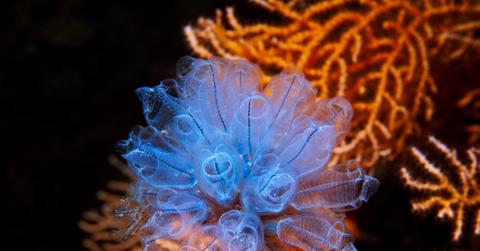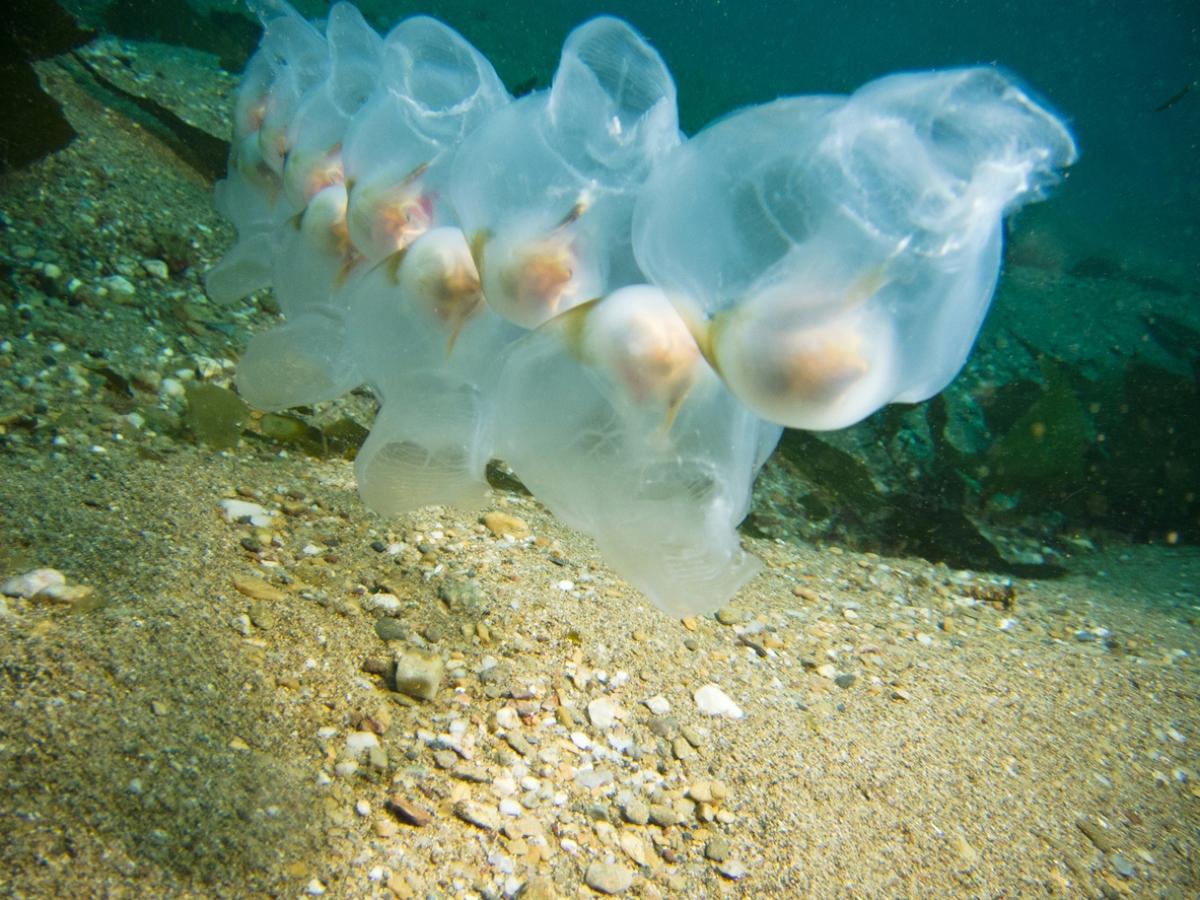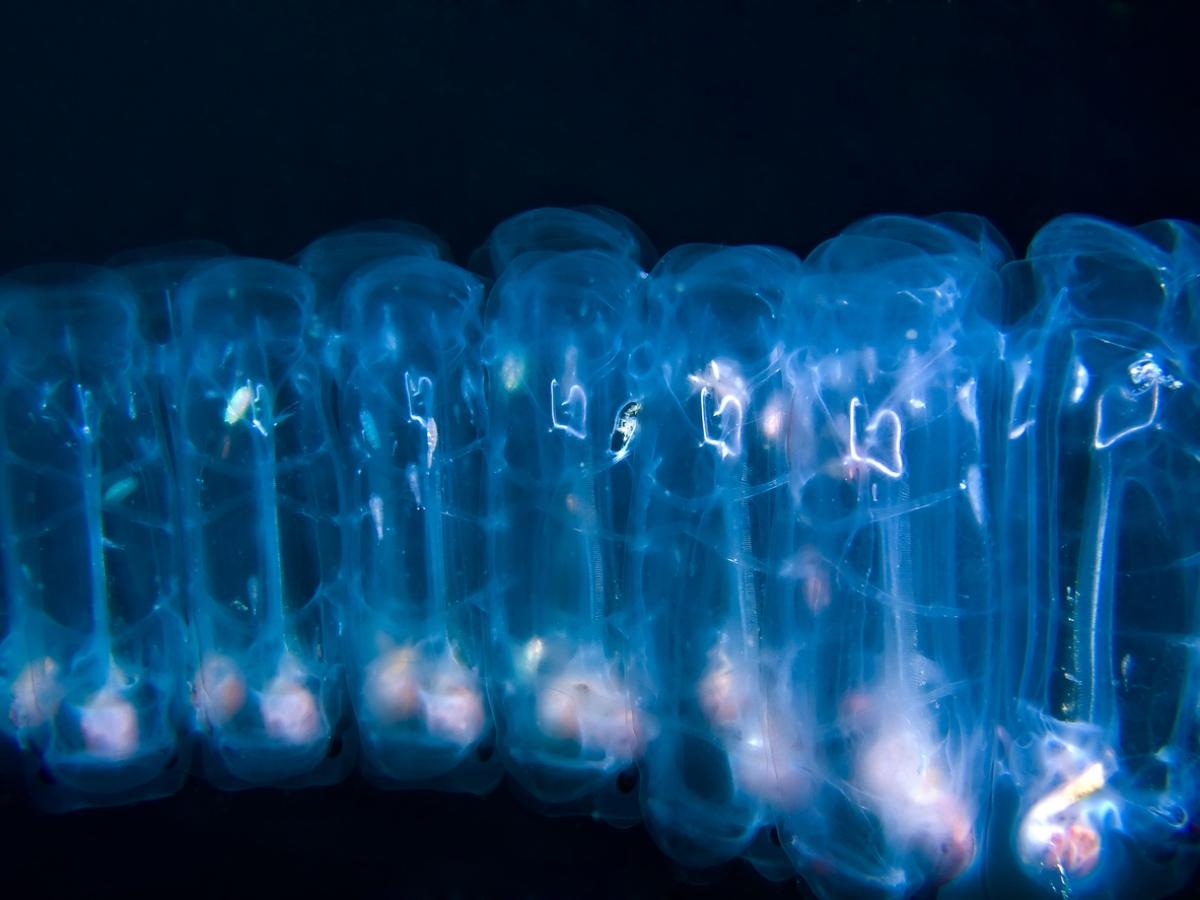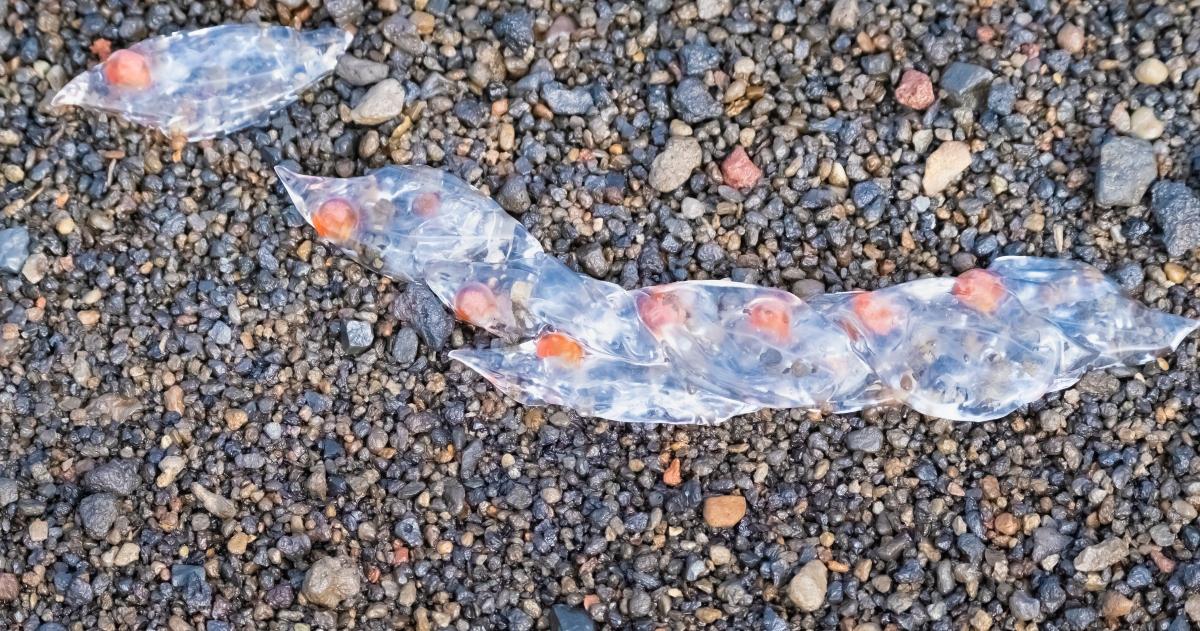Sea Salps: The Unique Sea Creature You've Probably Never Heard Of
Published June 28 2023, 11:51 a.m. ET

The world's oceans hold untold mysteries of how creatures survive, and scientists are always learning more about what lives beneath the surface. Though most of us have heard of jellyfish, you may not know about sea salps, which resemble jellyfish in appearance yet are closely related to humans.
People have become curious about sea salps due to their tendency to wash up on beaches. Some people have even dubbed them "jellyfish eggs," but that's not what they are at all!
Let's examine the mysterious life of the sea salp. Here's all you want to know about what it looks like, how it survives, and whether it's edible.

What are sea salps and what do they look like?
As the Australian Museum notes, sea salps resemble jellyfish yet share very important traits with humans. They are part of the same phylum as sea squirts. Sea salps are somewhat transparent and have a barrel shape. It's common for people to mistake sea salps for jellyfish when they wash up on shore, as jellyfish tend to do.
Sea salps are related to all backboned animals and have a tough yet flexible rod called the notochord running along their backs during the larval stage. The notochord helps protect a central nerve cord and attach to muscles, but salps lose the notochord as they mature.

Here's how — and what — sea salps eat.
Sea salps are filter feeders, so they pump phytoplankton-rich water through their feeding filters to gain their necessary nutrients. While they expand and contract their muscles to move through the water, that nutrient-filled water feeds them. The Australian Antarctic Program says that sea salps are non-selective, eating whatever comes through their feeding nets.
Sea salps are also an important part of the marine food chain since they provide food for a number of animals: turtles, fish, birds, some corals, and phromina, according to the Woods Hole Oceanographic Institution (WHOI).
Sea salps can grow extremely fast.
As the Australian Antarctic Program explains, sea salps have a life cycle alternating between sexual and asexual forms. The asexual stage produces long chains of identical salps that break free to reproduce sexually. If they have plenty of food, these chains can grow very quickly, and within just 48 hours, the salp completes a full life cycle. Sea salps living in temperate environments can increase their body length by up to 10 percent per hour.

Can you eat sea salps?
According to the South African Association for Marine Biological Research (SAAMBR), sea salps are indeed edible. Unlike jellyfish, they do not sting, and are reportedly more nutritious to eat as well. SAAMBR also says that sea salps taste "salty" because they are mostly made of ocean water, but we'll leave that to individuals to decide.
Check out these other fun facts about sea salps.
The Catalina Island Marine Institute (CIMI) states that sea salps are tunicates in the phylum Chordata (the same phylum as humans). They have a brain, though only during the larval stage, making them more similar to humans than expected.
Salps live in equatorial, temperate, and cold oceans worldwide, although the Southern Ocean near Antarctica is their typical habitat.
Sea salps also uniquely regulate our climate, according to the Woods Hole Oceanographic Institution. Their steady diet of phytoplankton makes their poop rich in carbon. Their fecal pellets and dead salps fall to the ocean floor, providing food for twilight zone dwellers. That carbon can remain deep in the ocean for years and possibly centuries, so any changes in salp populations could impact climate change.